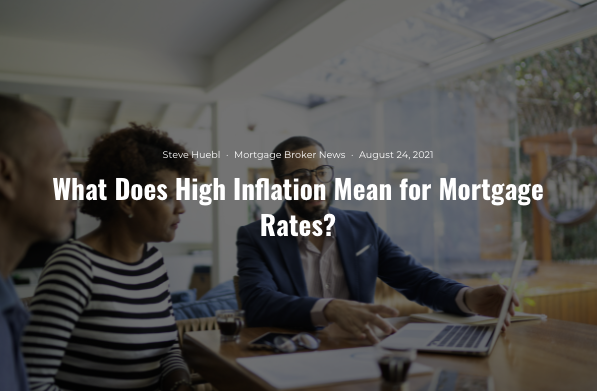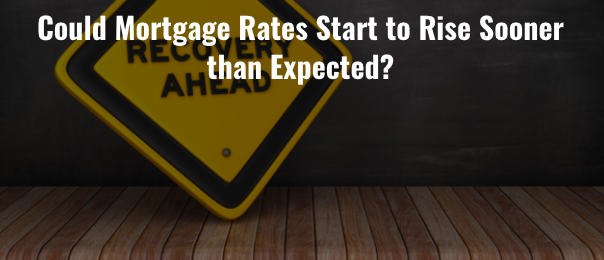
Canada’s inflation rate came in above expectations last week, rising to its highest level in more than a decade.
If above-target inflation persists, it could have ramifications for homeowners in the form of shifting rate-hike expectations.
Canada’s inflation rate came in burning hot at 3.7% for July, according to data released by Statistics Canada. That’s the third consecutive monthly inflation reading that has come in above the Bank of Canada’s neutral range of 1.75% to 2.75%, which is the range needed to support the economy at full employment/maximum output while keeping inflation under control.
But the Bank of Canada continues to believe that elevated consumer prices will prove temporary and are largely the result of an economy recovering from the pandemic-induced slump.
“…inflation is likely to remain above 3% through the second half of this year and ease back toward 2% in 2022, as short-run imbalances diminish and the considerable overall slack in the economy pulls inflation lower,” the Bank said following last month’s interest rate decision. “The factors pushing up inflation are transitory, but their persistence and magnitude are uncertain and will be monitored closely.”
More recently, Bank of Canada Governor Tiff Macklem reaffirmed the messaging that everything is under control in a July 29 Financial Post column. “The Bank of Canada remains firmly committed to keeping inflation low, stable and predictable,” he wrote. “Even with the gyrations caused by the pandemic, inflation has averaged pretty close to target through the past few years to today. You can be confident that we will keep the cost of living under control as the economy reopens.”
But the central bank can only allow high inflation to persist for so long before a policy response is required.
“The Bank of Canada may be willing to tolerate higher inflation while the economy is still re-opening and recovering from the health shock, but it will respond to more lasting price pressures by reducing monetary accommodation,” wrote TD Bank senior economist James Marple in a recent post. “In the near-term, asset purchases are likely to continue to be pared back, with rate hikes likely to follow late next year.”
At the Bank’s last rate decision meeting in July, it announced that it was reducing its bond-buying program to $2 billion per week from $3 billion.
At the height of the pandemic, the BoC embarked on a quantitative easing program in which it purchased at least $5 billion worth of bonds each week to flood the market with liquidity, in turn keeping 5-year bond yields—and by extension, 5-year fixed mortgage rates—lower than they otherwise would be.
Average mortgage rates remain slightly above their all-time lows reached in December. But the question is, for how much longer?
The Timing of Future Rate Hikes
Those concerned about imminent rate hikes can take solace in the Bank of Canada’s repeated forecast that rates won’t increase until the second half of next year.
“We remain committed to holding the policy interest rate at the effective lower bound until economic slack is absorbed so that the 2% inflation target is sustainably achieved. In the Bank’s July projection, this happens sometime in the second half of 2022,” read the BoC’s statement from its July rate meeting.
The bond market’s read on future rate hikes is that consumers can expect one quarter-point rate hike over the next year, which would take the BoC’s overnight lending rate from its current record low of 0.25% to 0.50%.
And despite the latest high inflation figures, the bond market is actually forecasting one less rate hike over the next two years compared to a couple of months ago—it now expects three 25-bps hikes over the next two years, down from four. Looking three years out, the Bank of Canada is expected to deliver five quarter-point rate hikes in total, bringing the overnight rate to 1.50%.
This would cause prime rate to increase, leading to higher monthly payments for many borrowers with variable-rate mortgages. For those with fixed-payment variable mortgages, the amount of their payment going towards paying down the principal will decline, and the amount going towards interest will increase.
If prime rate was to rise 125 basis points over the next three years, the average mortgage payment could increase by approximately $180 a month, or $2,172 a year, based on today’s average mortgage amount and the lowest variable rates available nationally.
Borrowers with fixed-rate mortgages would not be immediately impacted by rising rates until their mortgage comes up for renewal at the end of their term, or unless they choose to refinance.
“While we are not overly concerned of a payment shock for renewals, the increase in mortgage rates will certainly impact purchasing power for many,” economists from National Bank of Canada wrote in a recent note.


